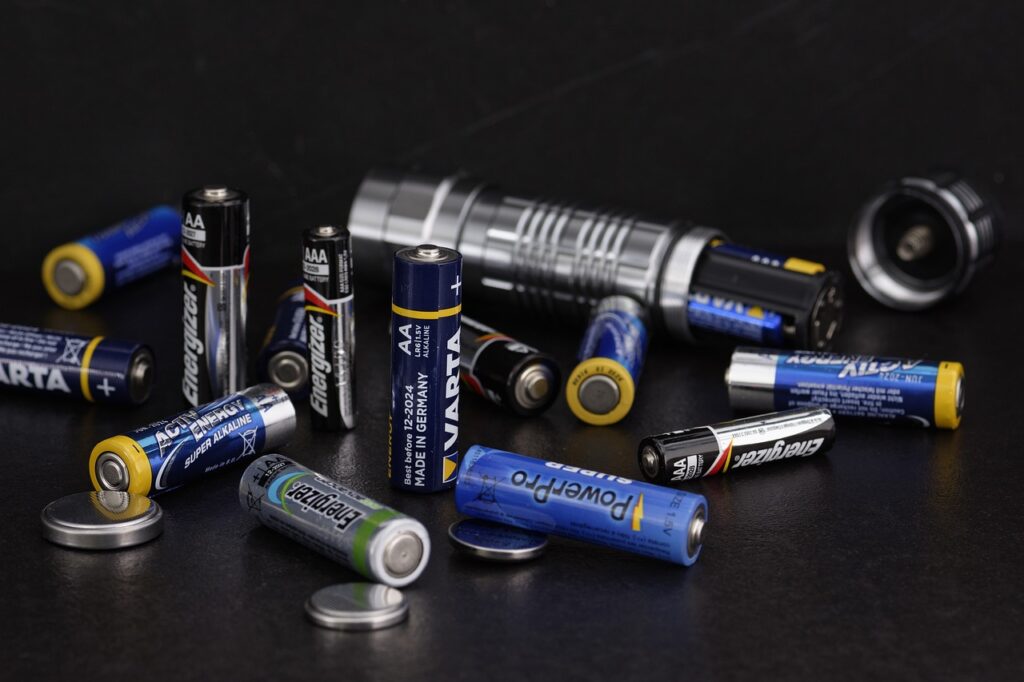
Shipping batteries can be a complex process due to the various types of batteries, regulations in transporting them, and the potential hazards they can pose. In this article, we’ll take a closer look at the different types of batteries, regulations for shipping them, how to pack them properly, and the couriers that ship batteries.
Types of Batteries
There are several types of batteries commonly used, including lithium-ion, alkaline, nickel-cadmium, nickel-metal hydride, and lead-acid. Each type of battery has its own characteristics and specific requirements for transportation.
Lithium-ion batteries are commonly used in smartphones, laptops, and other electronic devices. They are known for their high energy density and long life, but they can also be hazardous if not handled properly.
Alkaline batteries are commonly used in toys, flashlights, and other household items. They are non-rechargeable and generally considered safe for shipping.
Nickel-cadmium and nickel-metal hydride batteries are commonly used in power tools and other industrial applications. They are rechargeable and can be shipped safely if properly packaged.
Lead-acid batteries are commonly used in vehicles and other heavy-duty applications. They are not considered hazardous if properly packaged.
Regulations for Shipping Batteries
The transportation of batteries is subject to regulations set forth by the International Air Transport Association (IATA), the International Maritime Organization (IMO), and national authorities such as the United States Department of Transportation (DOT). These regulations aim to ensure the safety of individuals and the environment during the transport of hazardous materials, including batteries.
The regulations vary depending on the type of battery being shipped, its capacity, and the mode of transportation. For example, lithium-ion batteries with a capacity of over 100 watt-hours (Wh) or lithium-metal batteries with a capacity of over 2 grams (g) are considered hazardous and must be shipped in accordance with IATA and DOT regulations. In addition, lithium-ion batteries must be shipped at a state of charge of no more than 30% to minimize the risk of fire.
How to Pack Batteries for Shipping
Proper packing is essential for the safe transport of batteries. The packaging should be sturdy and able to withstand shocks and vibrations during transport. The batteries should be placed in a separate bag or packaging to prevent contact with other batteries or conductive materials.
When shipping lithium-ion batteries, they must be packed in a way that prevents short-circuiting. This can be achieved by placing each battery in its own plastic bag or wrapping it in insulating material. The batteries should also be secured in a way that prevents movement during transport.
Couriers that Ship Batteries
Several courier companies offer shipping services for batteries, including UPS, FedEx, and DHL. Each company has its own policies and procedures for shipping batteries, so it’s important to check their specific requirements before shipping.
UPS offers several shipping options for batteries, including ground, air, and ocean freight. The company also offers specialized packaging materials for shipping hazardous materials.
FedEx offers a range of shipping options for batteries, including ground, air, and ocean freight. The company also offers specialized packaging materials and services for shipping hazardous materials.
DHL offers several shipping options for batteries, including air and ocean freight. The company also offers specialized packaging materials and services for shipping hazardous materials.
International Shipping of Batteries
When shipping batteries internationally, it’s important to comply with both the regulations of the country of origin and the destination country. The regulations can vary significantly from country to country, so it’s important to research the specific requirements before shipping.
In addition, international shipping can involve additional fees and taxes, such as customs duties and value-added taxes. The couriers that offer international shipping services can provide guidance on these fees and taxes.
Shipping batteries can be a complex process due to the various types of batteries, regulations, and potential hazards. It is important to research and comply with the regulations set forth by IATA, IMO, DOT, and national authorities to ensure the safety of individuals and the environment during transportation. Proper packaging is also essential to prevent damage or accidents during shipping.
When selecting a courier for shipping batteries, it is important to check their specific requirements and policies for shipping hazardous materials. Popular couriers such as UPS, FedEx, and DHL offer a range of shipping options and specialized packaging materials for shipping batteries.
International shipping of batteries involves additional fees and taxes, and regulations can vary significantly from country to country. It is important to research and comply with the regulations of both the origin and destination countries, and couriers can provide guidance on the fees and taxes involved in international shipping.
In conclusion, shipping batteries requires attention to detail and compliance with regulations to ensure the safe and efficient transport of hazardous materials. Proper packaging and selection of a reliable courier are also key factors in successful battery shipping.
